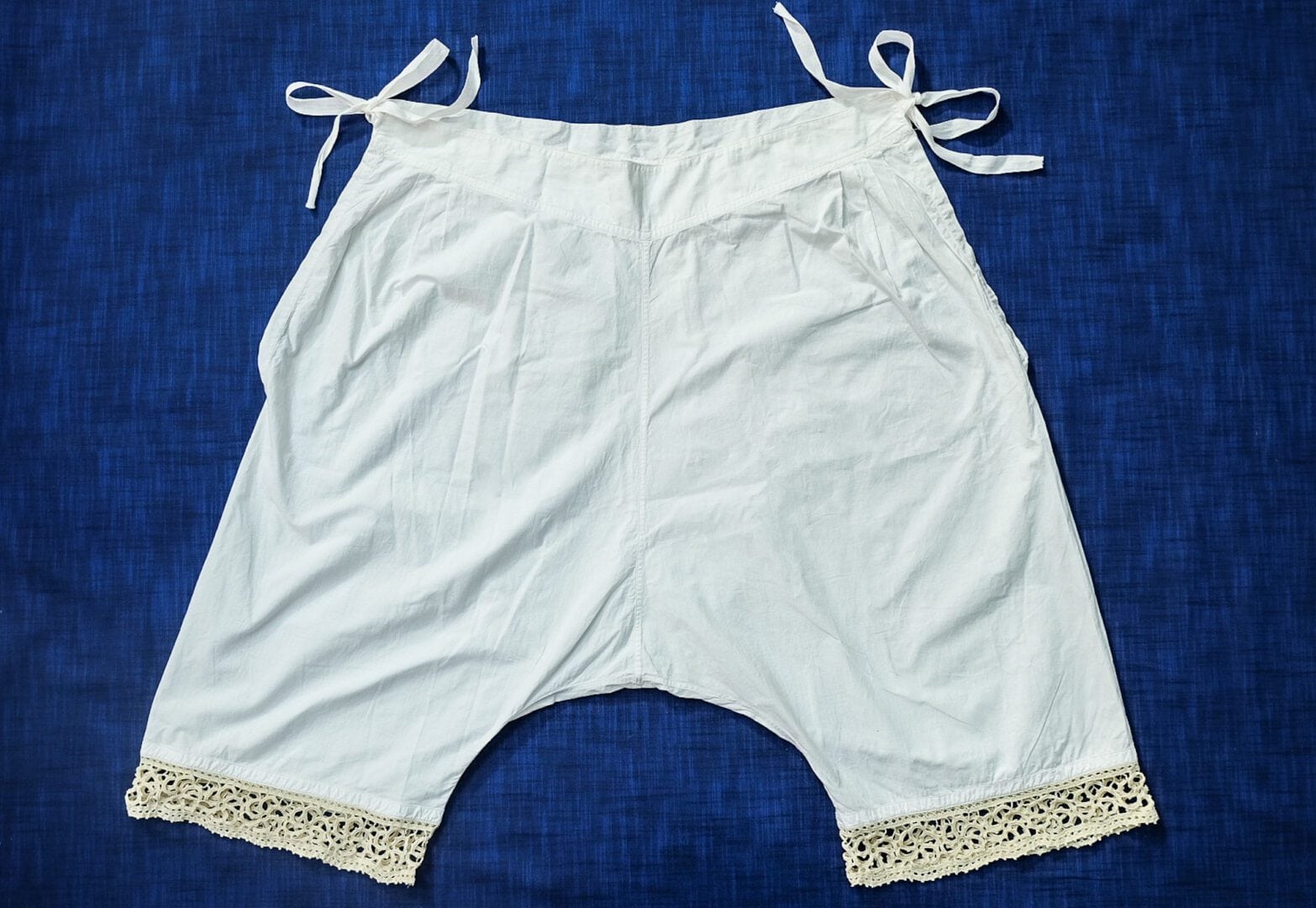
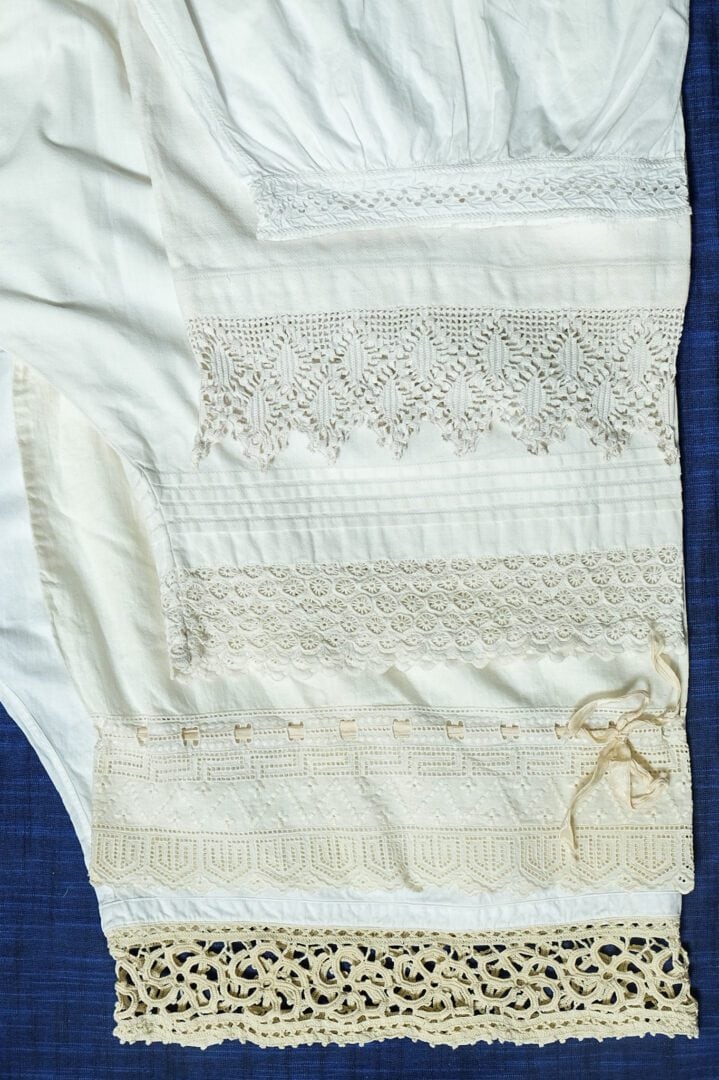
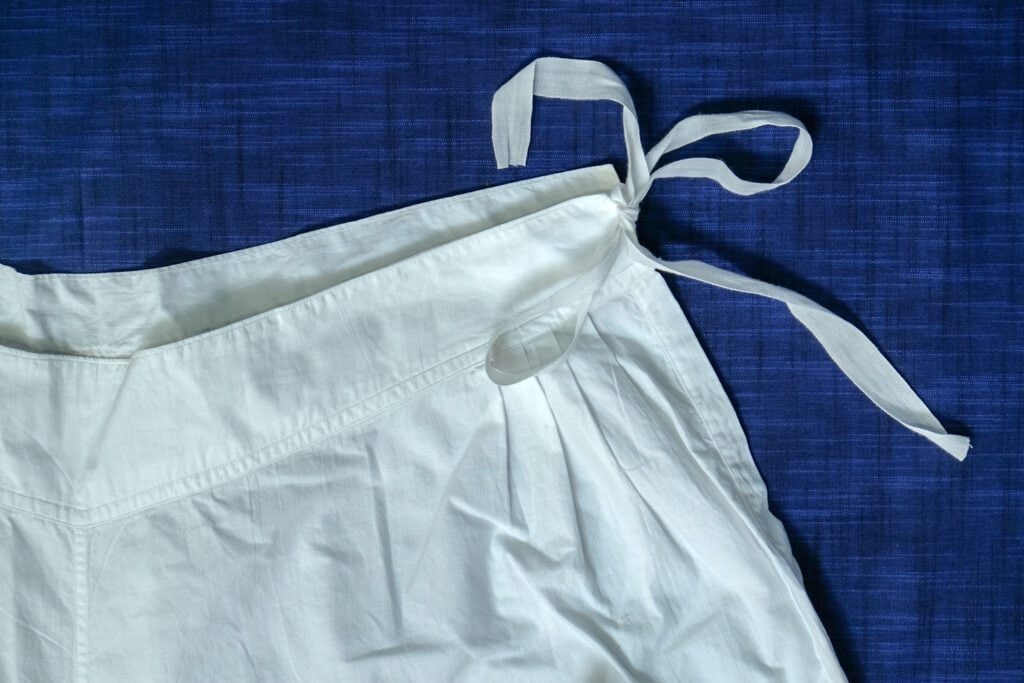
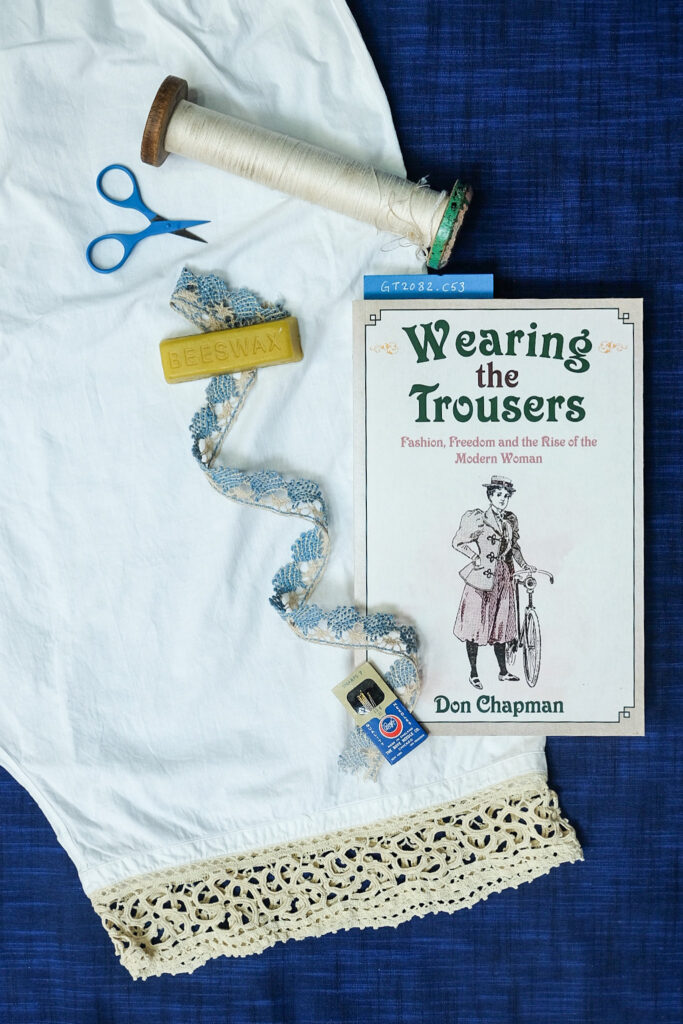
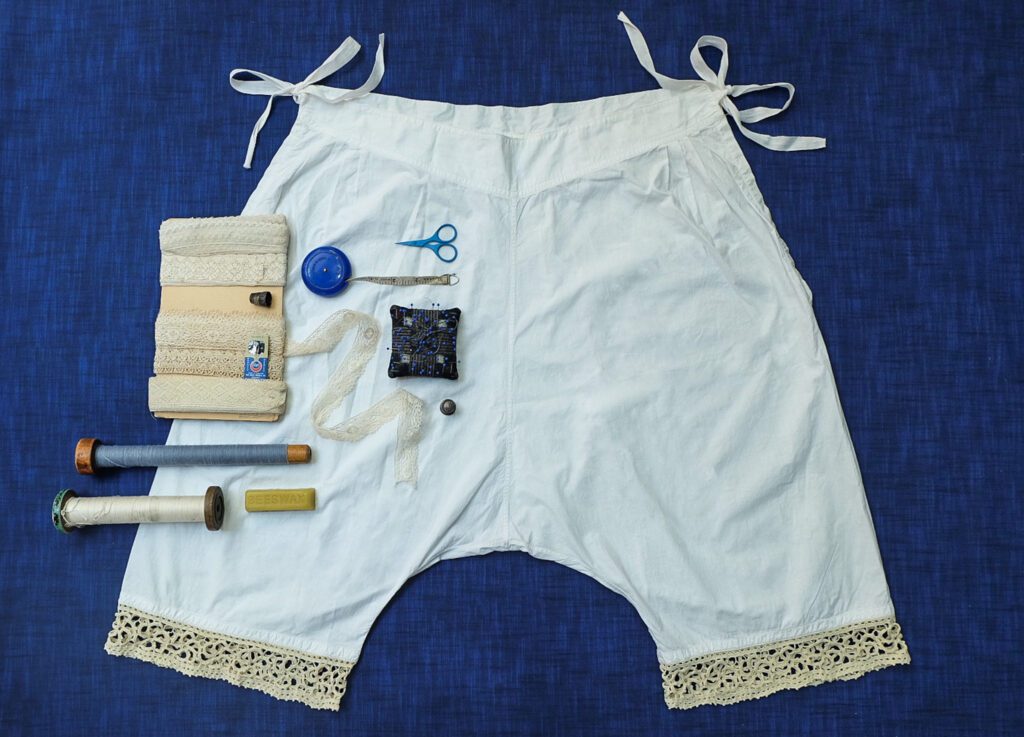
Bloomers. A divided women’s garment for the lower body and as such, one of the most fascinating garments in history. Named for Amelia Bloomer, owner, editor and publisher of ‘The Lily,’ one of the first papers devoted to the interests of women, circa 1850, bloomers are representative of women’s rights. They are a garment which provided unrestricted movement, allowing for greater and newfound freedom in the mid 19th century.
Whether you are an historical costumer in pursuit of a new set underneath your 19th-century clothing or a modern maker in love with a fascinating garment, this class is for you. Join expert costumer Sarah Woodyard in hand-stitching a pair of lace-trimmed bloomers unique to you. The style of bloomer we will sew is like those originally worn as an under garment by women in Western context from approximately 1850 to the turn of the 20th century. Taking inspiration from a collection of several mid-to-late 19th-century bloomers, Sarah will guide you through the patterning, cutting out and hand-stitching to create an historically-inspired undergarment perfect for the boudoir or styled for modern wear. Bloomers are incredibly comfortable and look great peeking out from under a dress, tunic or skirt. They allow for stylish covering on the windy-est of days, or during the most spontaneous cartwheel. Make them yours by choosing fabric, thread, ribbons and lace!
Some skills we will practice in this class:
- Drafting an historic pattern fit using your measurements
- Hand-sewing flat-felled seams
- Pleating
- Hand-sewing a waistband
- Attaching lace
Join Sarah to hand-sew an historically-inspired pair of bloomers.
Dates:
Four sessions:
Saturday, October 15th
Saturday, October 29th
Saturday, November 5th
Saturday, November 12th
Time:
11am – 1pm Eastern Time*
Location:
Zoom, a link will be sent to participants
the day before class.
Cost:
$350
*If you cannot attend the live sessions, a recording will be emailed to you for review in your own time.
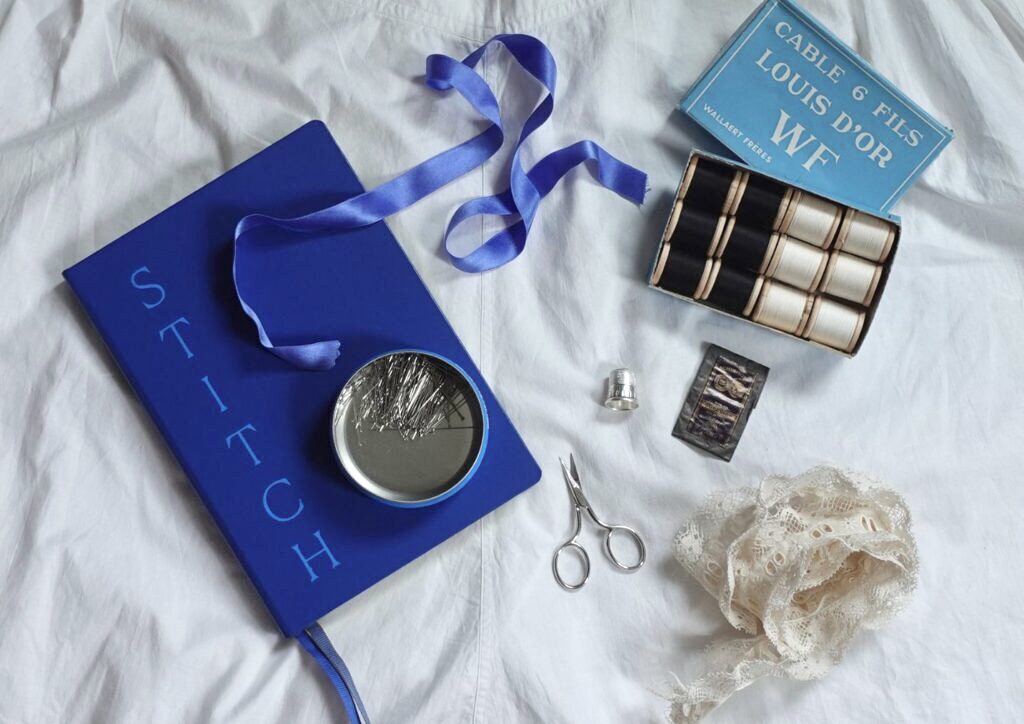
CLASS MATERIALS
A note about materials: If you want to make a set of bloomers out of materials similar to what the antique bloomers are made from look for the *. If wanting to take it in a more creative direction follow your creative impulse for materials selection. A Tatter-curated materials kit is also available for purchase with the class on the sign-up page.
- 1-1.5 yards of percale cotton* 114” wide OR 2-3 yards of 54”-60” wide fabric. The yardage is based on how long you want your bloomers to be. If less than 36” choose 1 yard of percale or 2 yards of another 54”-60” wide textile. If longer, then choose 1.5 or percale or 3 yards of 54”-60” wide fabric. Sarah will be using this: https://tatter.org/shop/make/organic-white-percale-cotton/
- 2-spools of thread to match fabric. Sarah will be using Gutermann silk*.
- 2-yards of lace trim, 1’’ to 4” long depending on the look you want. White or off white.*
- 3-yards 1/2” plain woven cotton tape
- 1.25” fine dressmakers pins
- Needles: Size 9-10 Sharp or between/quilters. For the percale cotton I will be sewing with a size 10 between/quilters.
- Small embroidery scissors
- 8”-10” Dressmakers shears
- Seam gauge
- Measuring tape
- Yard stick
- Pencil
- Pattern paper
- French curve
- Iron
Related Products

OUR TEACHER
Sarah Woodyard
Sarah Woodyard is inspired by the labor of historical dressmakers. She spent seven years apprenticing at the Margaret Hunter Millinery Shop in Colonial Williamsburg to learn eighteenth-century mantua-making (dressmaking) and millinery (accessories). After completing her apprenticeship she became a Journeywoman mantua-maker and milliner. Sarah holds her M.A. in Material Culture from the University of Alberta. After ten years of sewing and interpreting at the Margaret Hunter Shop it was time to take this knowledge into the twenty-first century. She opened Sewn Company in 2019. Sewn Company arises from a legacy of hand-stitchers past and present. Through Sewn she teaches historical hand-sewing to historical sewists and modern makers. She is currently taking commissions for hand-sewn items both historical and modern. She is passionate about preserving the skills and stories of hand sewing, through research, design and education. www.sewncompany.com
